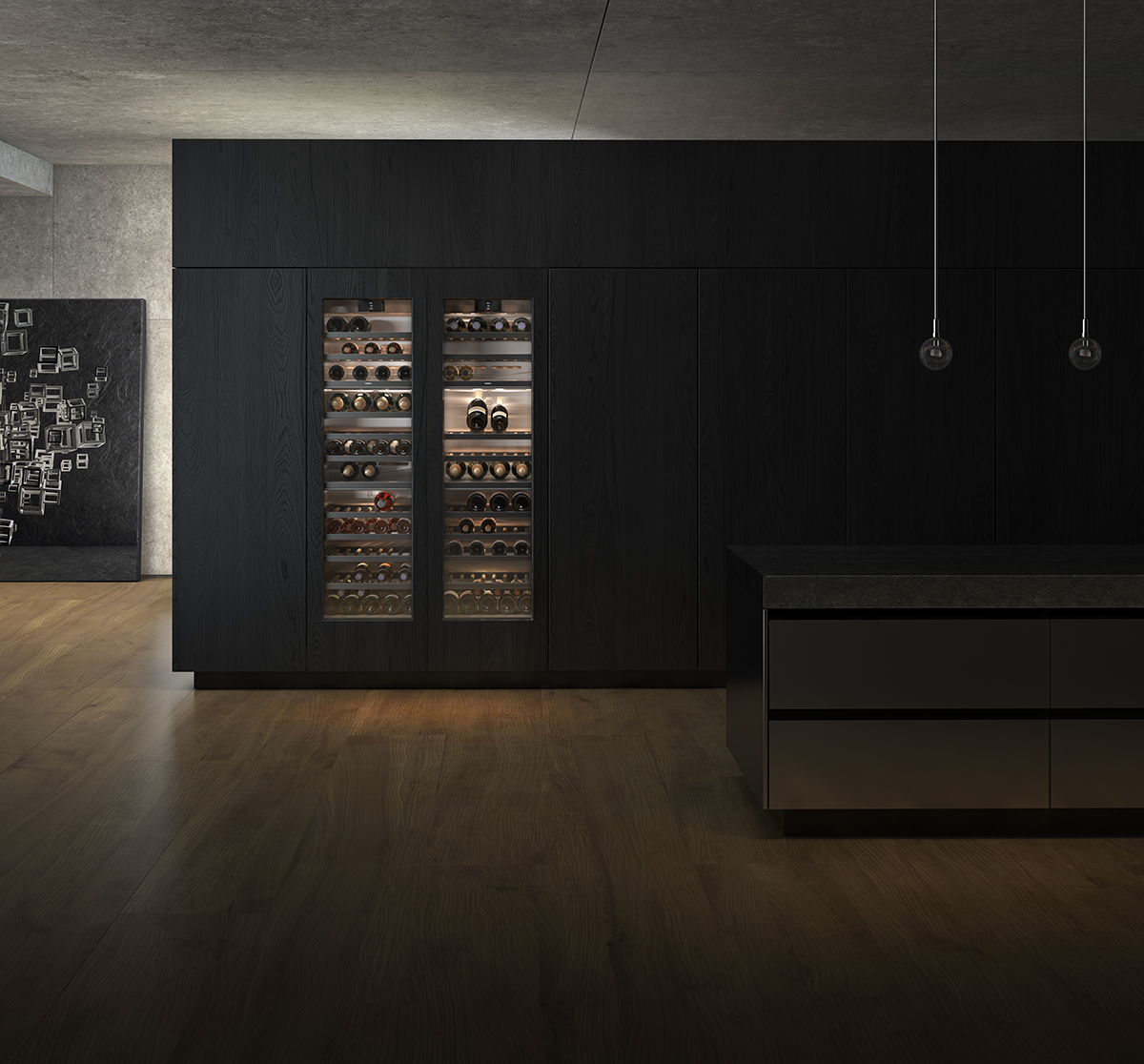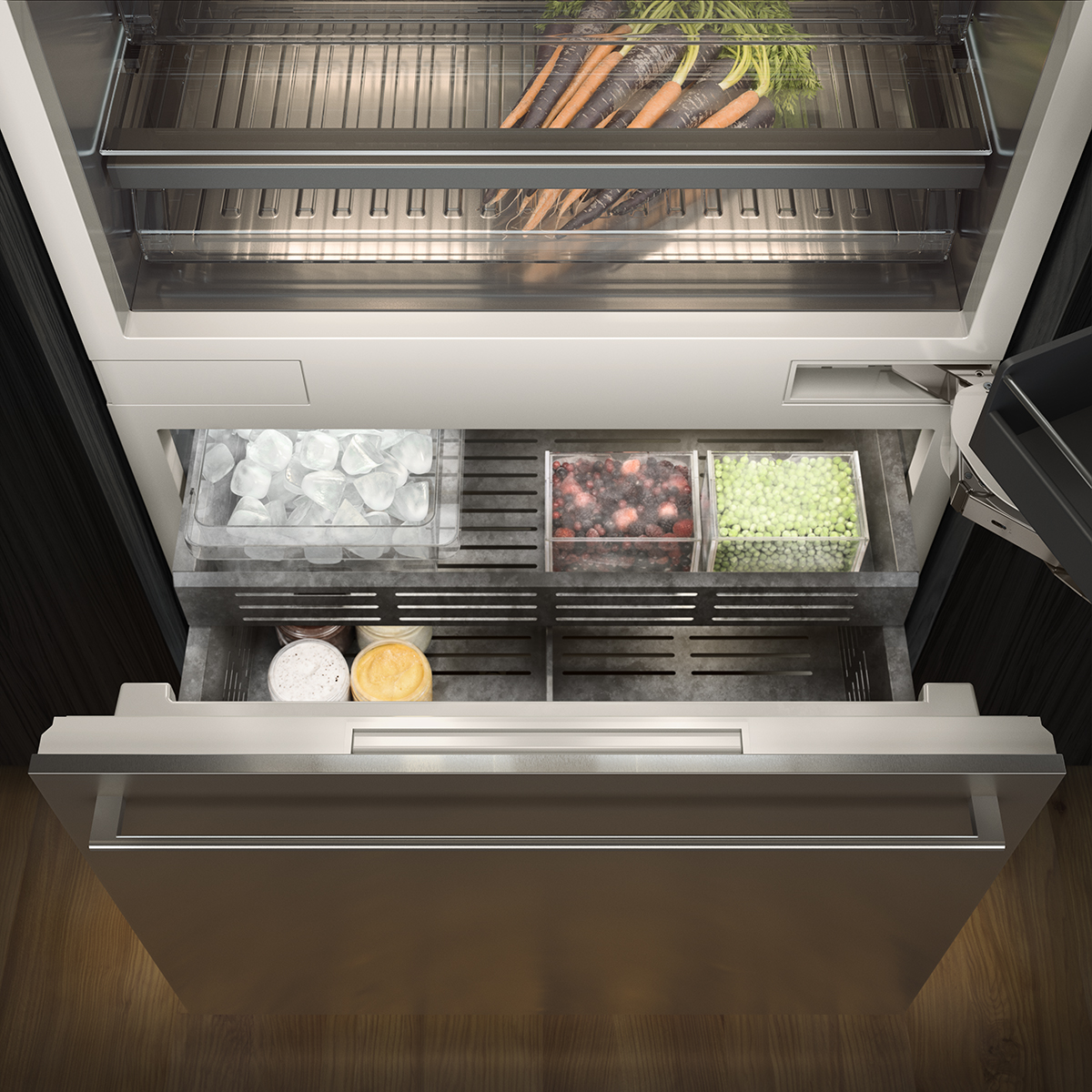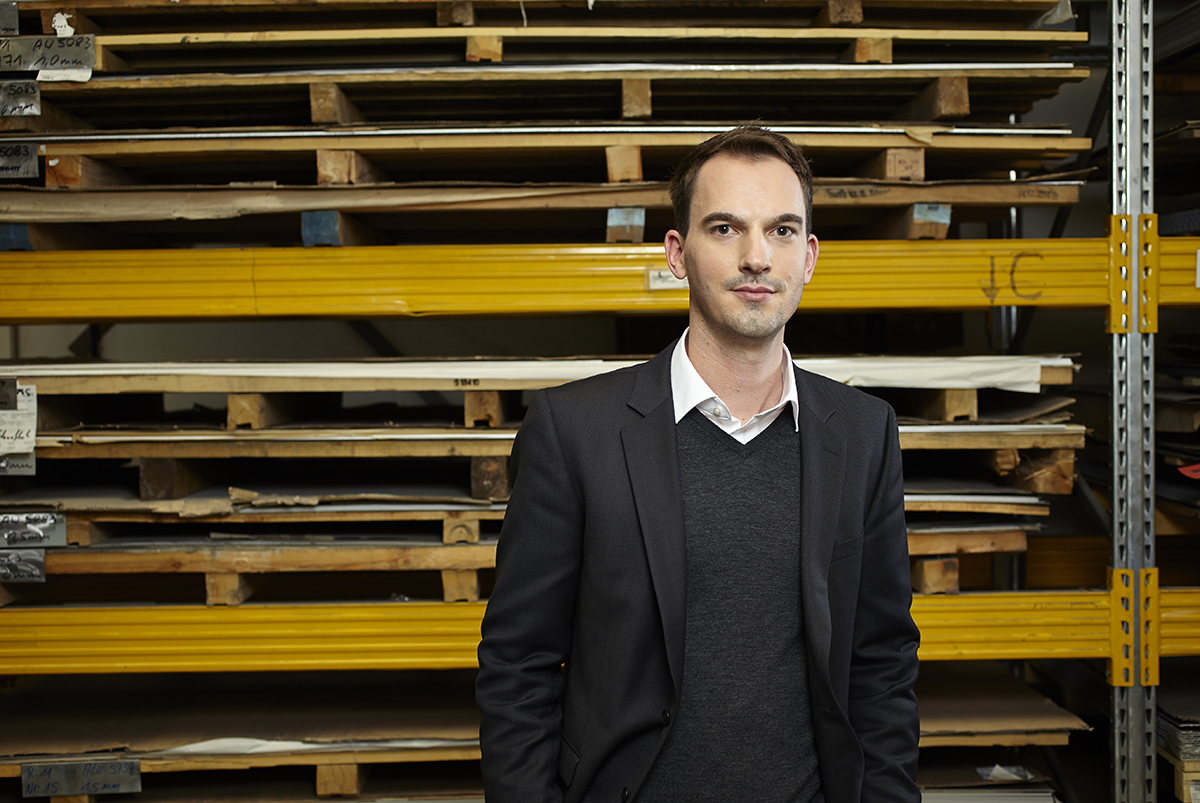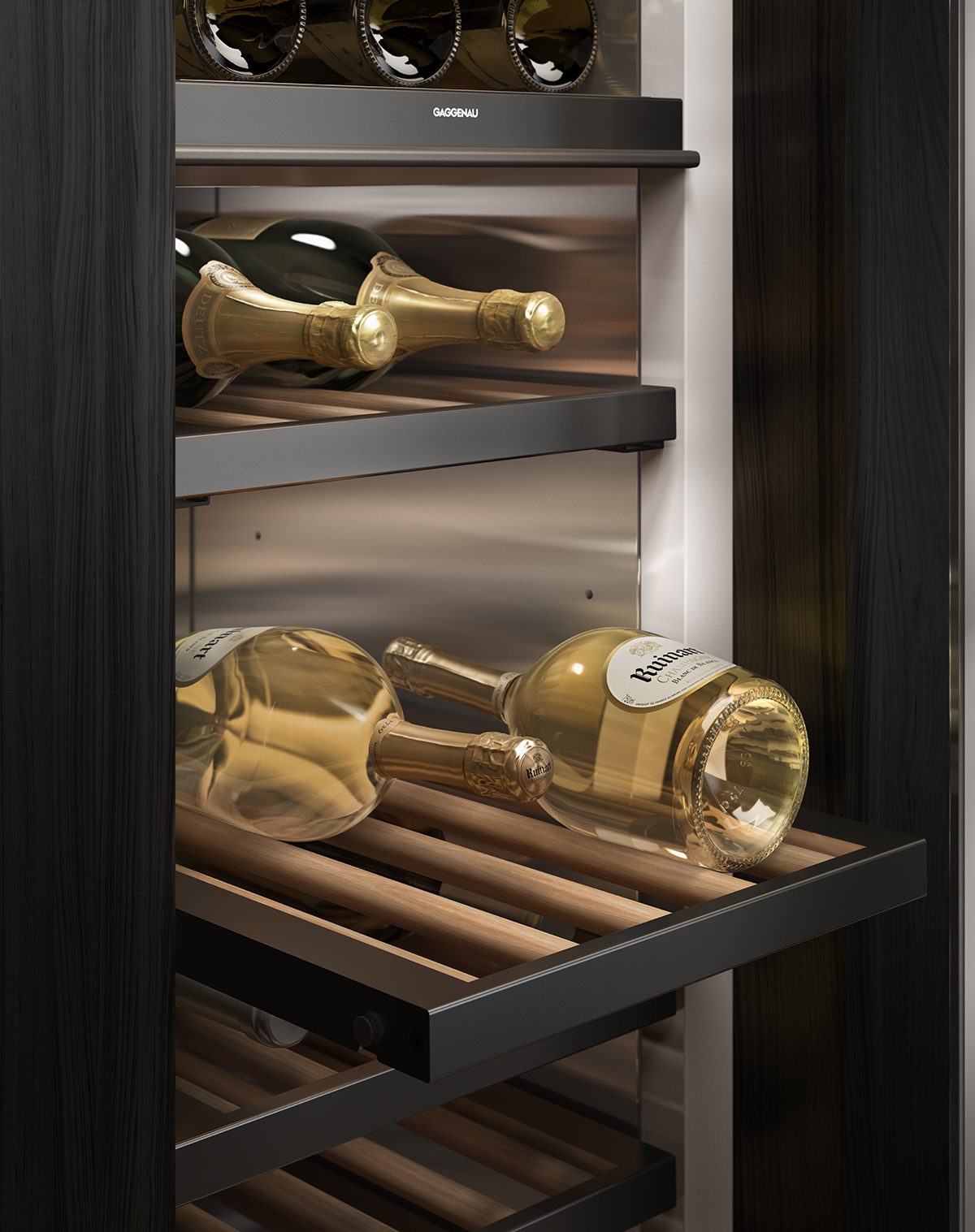
Gaggenau’s Vario cooling 400 Series appliances such as this wine climate cabinet are designed to be as much part of the architecture as they are functionally capable
Kitchens were once the utilitarian core of the house. Now, leading manufacturers of kitchen appliances are more about architecture and design than just practicality, meaning they can enhance a home’s aesthetic. Emma Love meets the designer of German high-end manufacturer Gaggenau to hear how life’s all about the experience, and how kitchens can be design statements in themselves
Increasingly, design-led kitchens are an extension of the architecture of the rest of the home. Here, we look at how appliances fit in.
Two years ago, at the Venice Architecture Biennale, Japanese designer Kengo Kuma created The Floating Kitchen, which consisted of a series of shelves with ceramic bowls and plates, urns and vases that he had found in the Chinese city of Chengdu. It was part of a satellite exhibition, the Kitchen Home Project, which imagined what our living environments could look like in the future (the exhibition also included a fully transparent kitchen by Dutch studio MVRDV). And while this crystal-ball creative thinking is certainly a world away from manufacturers such as Gaggenau, whose global success is built on technological advances and an architecturally inspired design language, it does demonstrate that our notion of what a kitchen looks like is changing in all kinds of ways, from the kitchen utensils we use to the plates we serve our food on and to appliances.
Follow LUX on Instagram: the.official.lux.magazine
In the past few years, for instance, there has been a growing interest in knives made by specialist craftsmen. The Japanese Knife Company, which has stores in London, Paris and Stockholm, sells traditional handmade Japanese knives to chefs and home cooks. Equally, more and more chefs are commissioning ceramicists to make tableware for their restaurants, a trend which is also reflected in non-professional kitchens. And when it comes to appliances, gone are the days when refrigerators and freezers were an ugly but necessary addition to an otherwise beautifully designed kitchen.
Now, appliances are increasingly made to reflect the overall aesthetic of the room and the wider home – all clean sculptural lines that blend seamlessly with the rest of the cabinets and furniture – while still setting new standards in terms of function. In other words, the appliances themselves are a crucial part of creating a visually pleasing kitchen landscape.
“People want their kitchens to be both a purposeful and a beautiful space whilst being a seamless extension of the architecture of their home,” says interior designer Natalia Miyar. “The kitchens in our projects are always designed in context of the wider architecture of the home, often with clean silhouettes, grounded by strong, classical materials like stone and softened by interesting textures and warm metals. It is important that a kitchen is designed not as solely a utilitarian space but also to have a warmth and a relaxed feel.”

This, of course, includes the design of appliances, which Miyar says is key: “It is important that these elements tie the design together and do not jar with the rest of the scheme. There are more and more design-led functional appliances on the market but I also like to design joinery which conceals larger pieces and provides a further tailor-made aspect to the design.’
One such manufacturer leading the way with design-led functional appliances is Gaggenau, whose Vario 400 series is the first modular system of fully integrated refrigeration products that can be combined to form a cooling wall. Comprising a series of statement handleless pieces, the idea of the system is that it shifts the image of refrigerators and freezers from purely professional appliances to elegant design objects. In part this is achieved through the highest levels of craftsmanship but it is also down to the considered choice of materials (think dark anthracite aluminium, oak-wood and glass doors) and techniques used (the finer glass-bead blasting of the aluminium parts), all of which results in a super-sleek tone.
Read more from the Image Issue: Global entrepreneur Johnny Hon on promoting global exchange
“This new range for Gaggenau is the very essence of refinement in the luxury kitchen appliance market,” says head of design Sven Baacke. “We see extraordinary interior aesthetics as something that should be seen in all spheres of life, including the kitchen. Staged beautifully and with perfect illumination, you are no longer simply storing wine or refrigerating, you are making a statement.” And these days it seems that this architectural statement doesn’t end with the right placement of the cooking island or the finish on the worktops – it encompasses everything else in the kitchen too.

Gaggenau designer Lars Dinter takes inspiration from architecture
We talk to Gaggenau designer Lars Dinter about the architectural influences behind the Vario cooling 400 series.
LUX: How was the new Vario 400 series inspired by architecture?
Lars Dinter: It’s not inspired by any particular style but I’m always very interested in what’s happening in architecture in general. It’s higher than art in a way because it’s a big responsibility and architects create works that last for a very long time compared to product design, for instance. I’m always drawn to contemporary Belgian architects such as Vincent Van Duysen, Marc Merckx and CAAN Architecten. Their style is very minimalist but uses natural materials and textures so buildings still feel warm. One of my big idols is Piero Lissoni. He is a product designer who does lots of interior design and again he has a minimalist style but it’s combined with an Italian elegance.
LUX: Gaggenau regularly consults chefs, sommeliers, interior designers and architects. Did this effect the design of the 400 series?
Lars Dinter: Interior designers and architects often tell us that they wish the products would integrate better into dining rooms and kitchen. The input from sommeliers includes the fact that the LED lights that we’re using need to be free of infrared and ultra-violet wave lengths to make sure that we’re not harming the wine during long-term storage and that we need specialist storage solutions such as humidity controls for storing vegetables and fruit as people are eating more of these and less meat these days.
Read more: Geoffrey Kent on Millennials and transformational travel
LUX: What affects your choice of materials and how do you make them become part of the architecture?
Lars Dinter: It’s as much about the shapes as it is about the materials so we’ve tried to make the overall appearance of the appliances cleaner and more contemporary. With the materials, we have changed from a stainless steel anodising process to anthracite aluminium for components such as the support brackets for the glass shelves (the cavity is still clad in stainless steel). We’re using this to give the appliances a warmer, more elegant feel which we think will also integrate better into the architecture. We want the same warm atmosphere and emotional appeal to our appliances as there is elsewhere in the home without losing that powerful technical performance.
LUX: What technological advances can we see in this series?
Lars Dinter: The most important technical advancement is our opening-assist system for the doors which enables customers to have cabinet fronts without interruptions. In the past there have been handle-less kitchens but the refrigerator and freezer has always still had handles. As far as we know our opening-assist system offers the first fully complete handle-less kitchen – appliances included. You can use the system as a push-to-open device in a handle-less kitchen but it also has a second setting so if you have a more traditional kitchen and still want handles, the same mechanism can be used to support opening heavy doors.

Gaggenau designer Lars Dinter combines shape and material to create elegant solutions which match form and function
LUX: Tell us about the design of the wine climate cabinet.
Lars Dinter: We are using oak-wood because it has a warm colour, a good grain and fits in with our approach to authentic materials. We have also added new accessories including a serving tray and a bottle presenter. These also feature anthracite aluminium and oak, so they are finely aligned with the rest of the products. With these accessories, we are trying to add more quality and appeal to the pieces. We are trying to make a big step towards becoming more appealing on an emotional level.
LUX: Do you think that kitchens are increasingly seen as architectural spaces?
Lars Dinter: There are no boundaries anymore. Kitchen, living and dining spaces are all merging together in one big living space and our new line-up of kitchen appliances fit into this way of living. Traditionally, a kitchen might have an island or cabinets with an oven or coffee machine and the appliances are integrated into this. We are enabling customers to have a transitional zone with a cabinet wall that has wooden panelling on the front with no hint what is hidden behind. The appliances could be hidden into these cabinets. With connecting rooms, a nice solution is to take the same architectural aesthetic throughout so the wine cooling units for example, could stand in the background of your dining room. After dinner, you can set the lights so they give off a little glow and become part of the mood of the space.






